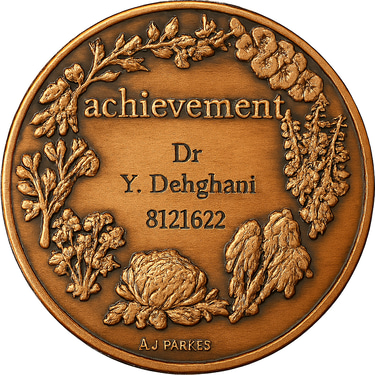Language Services Offered
Translation and interpretation in Persian (Farsi), Dari, Hazaragi, and Azerbaijani languages.
Accredited translation services
Persian/Farsi into English
Dari into English
Hazaragi into English
Azerbaijani into English
English into Persian/Farsi
English into Dari
English into Hazaragi
English into Azerbaija
Phone interpreting in Persian/Farsi/Dari
Video interpreting in Persian/Farsi/Dari
Accredited Interpreting services
Language Differences
Difference between Farsi and Persian
🗣️ Persian vs. Farsi — they’re essentially the same language, but the difference lies in naming conventions, context, and cultural nuance.
📌 Terminology Breakdown
Persian: The English name for the language spoken in Iran.
Farsi: The native name used by Iranians to refer to their language. It comes from “Parsi,” the original name of the region of Fars in Iran.
🧠 Why the Confusion?
After 1935, Iran officially requested that the country be called “Iran” instead of “Persia” in foreign correspondence.
The term “Farsi” gained traction in English-speaking countries through Iranian immigrants, but linguists often prefer “Persian” for consistency.
🏛️ Cultural & Historical Weight
Persian evokes the grandeur of the Persian Empire, classical literature (think Rumi, Hafez), and centuries of influence across Asia5.
Farsi reflects the modern, localized identity of the language as spoken in Iran today.
Difference between Persian/Farsi and Dari?
🗣️ Farsi and Dari are two major dialects of the Persian language, spoken primarily in Iran and Afghanistan, respectively.
They’re mutually intelligible, much like British and American English, but they differ in pronunciation, vocabulary, and cultural nuance.
🌍 Geographic & Cultural Context
Farsi: Spoken in Iran, where it’s the official language.
Dari: Spoken in Afghanistan, also an official language alongside Pashto.
Both trace their roots to Old Persian, but evolved separately due to regional influences.
🔤 Pronunciation Differences
Dari tends to preserve older Persian sounds:
Pronounces ق (qāf) as a hard "q", while Farsi softens it to "gh".
Uses و (waaw) as "w", whereas Farsi pronounces it "v".
Farsi has a more melodic, flowing rhythm; Dari is more staccato and formal.
📚 Vocabulary Variations
Farsi borrows more from French, while Dari leans toward English and Arabic influences.
🧠 Grammar & Usage
Formal grammar is nearly identical.
In colloquial speech, Dari often drops final consonants (e.g., "man" becomes "ma").
Dari uses affectionate suffixes like -gak or -k (e.g., dokhtarak for “beloved daughter”).
✍️ Script & Writing
Both use the Perso-Arabic script, but Dari may include extra diacritics for clarity.
Written forms are highly similar and easily understood across both dialects.
Difference between Persian, Arabic, Dari, Pashto and Hazaragi
These languages and dialects are deeply intertwined with the cultures of the Middle East and Central Asia, but they’re quite distinct in origin, structure, and usage. Here's a breakdown to help you navigate the differences:
🌍 Language Family Origins
Arabic: Afro-Asiatic, Semitic, Middle East, North Africa
Persian: Indo-European, Iranian, Iran, Afghanistan, Tajikistan
Dari: Indo-European, Iranian (Persian dialect), Afghanistan
Pashto: Indo-European, Iranian (Eastern), Afghanistan, Pakistan
Hazaragi: Indo-European, Iranian (Persian dialect), Afghanistan (Hazara communities
🗣️ Key Differences
1. Arabic
Script: Arabic script (original form)
Grammar: Complex root-based system; verbs and nouns built from triliteral roots
Pronunciation: Guttural sounds, emphatic consonants
Usage: Official language in 20+ countries; liturgical language of Islam
2. Persian (Farsi)
Script: Modified Arabic script (adds 4 letters)
Grammar: Simpler than Arabic; no gender for nouns
Pronunciation: Softer than Arabic; melodic intonation
Usage: Official language of Iran; rich literary tradition
3. Dari
Relation to Persian: Essentially Persian as spoken in Afghanistan
Differences: Slightly different pronunciation and vocabulary (more Arabic loanwords)
Mutual Intelligibility: Fully intelligible with Iranian Persian
Usage: One of Afghanistan’s official languages
4. Pashto
Script: Arabic-based, with additional letters
Grammar: More complex than Persian; gendered nouns and verb agreement
Pronunciation: Strong consonants; distinct rhythm
Usage: Co-official language of Afghanistan; widely spoken in Pakistan
5. Hazaragi
Relation to Dari: A dialect of Dari spoken by the Hazara people
Unique Features:
Influenced by Turkic and Mongolic languages
Distinct accent and vocabulary
Mutual Intelligibility: Understandable to Dari speakers, but with noticeable differences
Write your text here...
Write your text here...

Contact Us
Get in touch for linguistics, translation, and interpretation services.
Languages
Expert in linguistics and translation services.
yadehghani@gmail.com
© 2025. All rights reserved.
